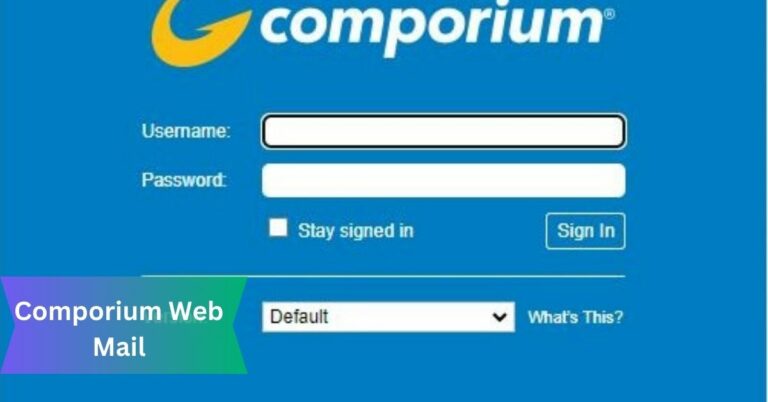Resource mobilization is the key to activating individuals and resources efficiently. Strategic allocation and utilization of personnel, equipment, and resources are imperative to ensure the success of projects or operational tasks.
This article explores the crucial role of resource deployment, shedding light on its significance, processes, and its positive impact on achieving organizational goals.
What is Resource Management? – For Those Who Don’t Know!
Resource management involves effectively assigning, utilizing, and supervising available resources, including people, money, and technology, to achieve specific organizational goals.
Resource management aims to ensure that the right resources are available in the right quantities, at the right times, and at the right costs to maximize production and efficiency.
Coordination across various organizational units, as well as with external clients and suppliers, may be necessary. Effective resource management helps organizations increase productivity, reduce waste, and achieve their objectives.
What is Effective Resource Management? – Unlocking Organizational Excellence!

Effective resource management is a systematic approach to allocating and exploiting human, technological, and financial resources, to achieve organizational goals and objectives most effectively and efficiently.
Critical components of efficient resource management include:
- Resource Planning: Identifying the types and amounts of resources required to achieve specific organizational goals and objectives. This involves identifying corporate goals, determining resource needs, and allocating resources based on priorities.
- Allocation: Assigning resources, such as people, money, and technology, to specific parts of an organization according to its requirements and priorities.
- Utilization: Ensuring resources are used effectively and efficiently to achieve organizational goals.
- Monitoring and Evaluating: Regularly analyzing resources used and making necessary changes to ensure optimal efficiency.
Good resource planning allows for efficient resource allocation, reducing waste, and boosting output. Organizations can ensure their resources are used as efficiently as possible by regularly analyzing and adjusting their resource management plans.
Resource Management Tasks – Let Me Explain!
- Various tasks are involved in the allocation and utilization of resources, such as:
- Resource Planning: Defining the types and amounts of resources needed to achieve specific goals and objectives.
- Allocation: Assigning resources to the parts of an organization that need them the most.
- Utilization: Effectively and efficiently using resources to achieve organizational goals.
- Monitoring and Evaluating: Consistently monitoring how resources are used to ensure efficiency and making necessary changes.
- Financial Management and Budgeting: Developing and monitoring budgets to ensure effective resource use.
- Workforce and Staffing Planning: Planning the organization’s workforce to achieve its goals.
- Project Management: Regulating resources to complete projects on time, within budget, and to quality standards.
- Vendor and Supplier Management: Managing relationships with suppliers to ensure timely and cost-effective resource acquisition.
Read: Taj Cross – Explore The Details Instantly!
7 Types of Resource Management – Dive Into Detailed!

In order to achieve productivity and success, businesses need to adopt a comprehensive approach to resource management by considering seven major types:
1. Human Resource Management:
Human Resource Management (HRM) is a critical aspect of resource management that focuses on the organization’s workforce. This involves activities such as recruitment, training, development, performance appraisal, and employee relations.
HRM aims to ensure that the right people, with the appropriate skills and competencies, are in the right positions to contribute effectively to the organization’s goals.
Effective human resource management is vital for employee satisfaction, productivity, and the overall success of the organization.
2. Technology Management:
Technology Management involves the strategic planning and coordination of an organization’s technological resources. This includes the acquisition, development, and maintenance of technology infrastructure, software systems, and digital assets.
Managing technology resources efficiently ensures that businesses stay competitive, innovative, and adaptable in a rapidly evolving technological landscape.
It involves making informed decisions about technology investments, upgrades, and ensuring the optimal use of available technological tools to enhance operational efficiency.
3. Financial Management:

Financial Management is the process of planning, organizing, and controlling an organization’s financial resources. This includes budgeting, accounting, financial reporting, and risk management.
Effective financial management ensures that resources are allocated wisely, budgets are adhered to, and financial risks are mitigated.
It plays a crucial role in supporting the organization’s overall strategy, enabling it to make informed financial decisions and achieve its financial goals.
4. Project Management:
Project Management is the systematic planning, execution, monitoring, and closing of projects to achieve specific objectives within a defined timeframe and budget. It involves coordinating resources, tasks, and timelines to ensure successful project completion.
Project managers are responsible for resource allocation, risk management, and communication among project team members.
Efficient project management is essential for delivering projects on time, within budget, and meeting quality standards.
5. Vendor and Supplier Management:
Vendor and Supplier Management is the process of overseeing relationships with external suppliers and vendors. This includes sourcing, procurement, contract negotiation, and ongoing vendor performance evaluation.
Effective management of vendors and suppliers ensures a reliable supply chain, cost-effective resource acquisition, and timely delivery of goods and services.
It involves selecting the right vendors, negotiating favorable terms, and maintaining strong partnerships to support the organization’s operations.
6. Knowledge Management:

Knowledge Management involves capturing, organizing, and leveraging the intellectual assets of an organization. This includes information, expertise, and experience held by employees.
Knowledge Management systems facilitate the sharing of information and best practices within the organization, fostering innovation and continuous improvement.
7. Risk Management:
Risk Management is the systematic identification, assessment, and mitigation of risks that could impact the achievement of organizational objectives. This includes financial risks, operational risks, regulatory risks, and strategic risks.
Effective risk management involves developing strategies to minimize the negative impact of potential risks while maximizing opportunities.
It ensures that the organization is prepared to handle uncertainties, adapt to change, and safeguard its assets and reputation.
Why is Resource Management Important? – Check This Out!
Organizational performance and sustainability depend on effective resource management. It contributes to the efficient and effective use of resources, such as human.
Technology, and financial resources, to fulfill corporate goals. Good resource management can enhance overall performance, reduce waste, and increase productivity.
Organizations can make informed resource allocation decisions by periodically monitoring and assessing resource usage based on a clear understanding of available resources and organizational goals.
Effective resource management is critical for ensuring that companies have the resources they need to meet their objectives, remain competitive, and achieve long-term success.
Benefits of Resource Management – Take Analysis!

One of the factors determining a business’s fate is how well it handles its resources. Good resource management involves making the most of time, money, and other assets available to a business.
Having a clear awareness of resources and potential uses encourages more collaboration and teamwork among different teams and departments working toward common goals.
Recognizing and managing potential hazards can decrease the impact of risks and enhance risk management capabilities.
Efficient resource management is crucial for business success, improving productivity, adaptability, collaboration, and risk-reduction strategies.
What is Resource Management Software? – Take A Look Here!
Resource management software refers to software designed to track and manage the availability, use, and deployment of resources, including staff, equipment, and supplies.
It supports organizations in automating and streamlining processes for mobilizing, allocating, and tracking resources.
With resource management software, organizations can:
- Monitor resource availability and usage in real-time.
- Organize and allocate resources based on demand and priority.
- Monitor and control resource deployments, including location, status, and usage.
- Reduce waste and maximize resource efficiency.
- Inform decision-makers about resource status and availability.
- Facilitate communication and collaboration among incident responders.
Read: Blueface Net Worth – Access The Details Effortlessly!
Conclusion:
Resource deployment is not just a task; it’s a strategic imperative that propels organizations toward success. By effectively activating personnel and resources, businesses can optimize performance, achieve goals, and foster a culture of trust and collaboration.
Embrace the power of resource deployment, unlock potential, and journey confidently towards a future of unparalleled achievements.
Read:










+ There are no comments
Add yours